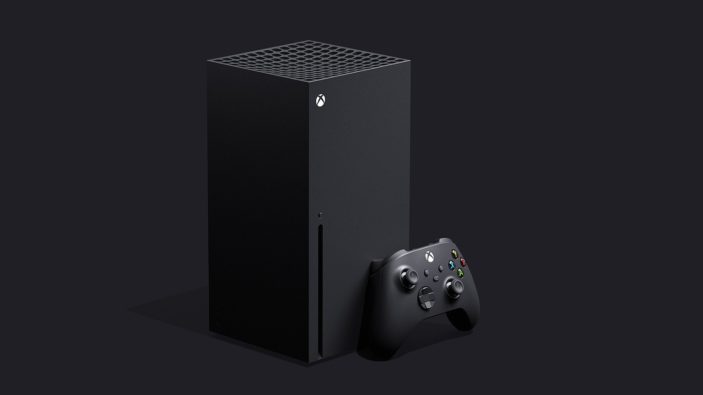
The pain of being publicly humbled suffuses every part of the Xbox Series X. Its predecessor’s missteps inform every facet of its design, from its outer shell to the operating system that powers it. After seven long years of being trampled by the competition, Xbox is finally getting up off the mat. It has taken its licks, learned hard lessons from each one, and is hungry once more for success.
Like the Xbox One before it, Series X is a multifaceted machine. Its older sibling initially prioritised TV above almost everything else. Series X makes games the hub of the Xbox experience once more. Far from the Xbox One’s desire to be the living room’s beating heart, Series X, perhaps reflexively, wants to fade into the background. The lesson Xbox re-learned in its years of market exile is clear: never forget that the games are the stars, and the hardware is the stage.
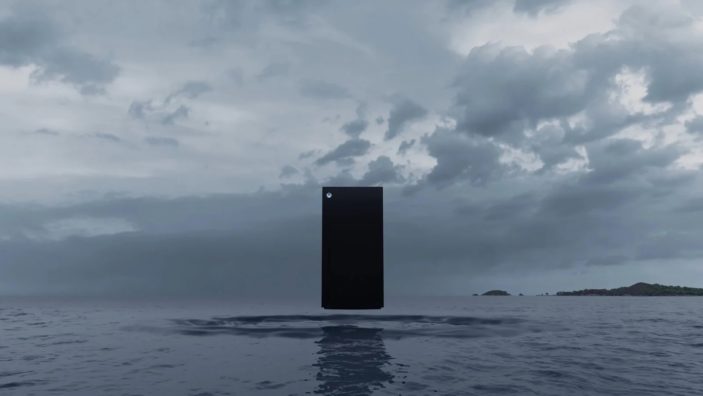
Design
The Xbox Series X is a black, boxy structure standing 30cm high, 15.5cm wide, and 15cm deep. The wanky, academic comparison would be to say that its facade recalls brutalist architecture, all smooth edges, and little interruption. When first revealed, jokes were made about the console looking like the Monolith from 2001: A Space Odyssey, or the kind of refrigerator a company like Razer might make. Attentive PC gamers, however, might note its resemblance to external graphics card enclosures. Given the hardware the Series X contains, I think that’s far closer to the mark.
The front panel is a flat black plane interrupted by only three points of interest. There is a Blu-ray disc drive, a single USB 3.2 port, and a backlit Xbox logo in the upper left. Indeed, the backlit Xbox logo is often the only way to know if the machine is on, so quiet is it during operation.
The back panel features two USB 3.2 ports, a LAN port, an storage expansion slot, HDMI-in, and a two-pin power port.
A large fan at the top of the console pushes air through large exhausts on the bottom and rear. As cooling solutions go, it’s kind of like a wind tunnel. This is gives the Series X one of the more interesting cooling strategies I’ve seen in any console to date.
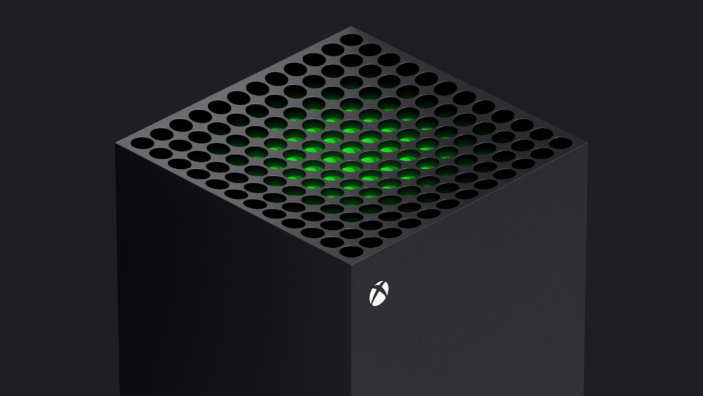
Hardware
The Xbox Series X loadout begins with an 8-core custom Zen 2 CPU running at 3.8GHz (or 3.6GHz with simultaneous multithreading). It has 16GB of GDDR6 memory, with a bandwidth of 10GB at 560GB/s or 6GB at 336GB/s. The GPU itself is a custom RDNA 2 capable of pulling 12 teraflops and 52 compute units at 1.825GHz. Its internal storage capacity is 1TB via a custom NVME solid-state drive for very fast load times. The internal storage can be expanded with a second 1TB expansion card, sold separately. Finally, the Series X has a 4K UHD Blu-Ray drive built-in for those who still prefer physical media.
These specs give the Series X a lofty performance target of 4K60 across the board. If your TV supports 120Hz playback, 120fps gameplay is now on the table for a home console.
One of the Series X’s strangest omissions is that of WiFi 6, which delivers blindingly fast data transfer speeds. WiFi 6 has been around since 2019 and is popular among home network builders that love a good mesh setup. This omission may cost the Series X in the short term — its competition, the PlayStation 5, does feature WiFi 6 out of the box. I expect that this will be a deficit Microsoft addresses in future iterations of the hardware. Were a new version of the box to arrive in 2022 without it, I would be very surprised indeed.

UI
Xbox One owners may have noticed an update to the system’s OS a few weeks ago. The version of the Xbox OS now on Xbox One is the same one on the Series X. If Xbox’s goal is to make shifting between hardware less of a hassle, it has knocked it out of the park.
It’s taken Xbox a very long time to find a layout for the Xbox OS that it was happy with. This new OS mostly makes changes to help with readability and accessibility. It puts all of your most recently used apps front and centre on the home screen, above Game Pass.
The most positive change for me is the speed with which the OS now moves. The raw power of the Series X makes navigating the OS a fast, breezy experience. This stands in stark contrast to the Xbox One X, which struggled to load certain menus at times. There’s no waiting around here, there’s no freezes or judders as menus load. It’s extremely refreshing and being able to move around so quickly does a lot to smooth move over the UI’s biggest problem — it’s still a bit too complex.
The dream is that the Xbox UI one day becomes as intuitive and at-a-glance the PS4 or Switch interfaces. For now, I think there’s still work to do in that regard. It’s certainly in the best shape of its life, clearer and faster than ever, but there are still ways to streamline it in my opinion. The UI’s biggest problem is that it’s still not immediately apparent where certain tabs or functions are if you’re less experienced and don’t know where to look. There are multiple paths to get to the same places — I can think of three different ways to access the Xbox Store — and that’s good, but not all of them are clear right away. It’s a UI that makes sense to a power user, someone who is used to dealing with complex systems all the time. Your mileage may vary, of course, but for the average user, I worry that it might be that little bit too convoluted.
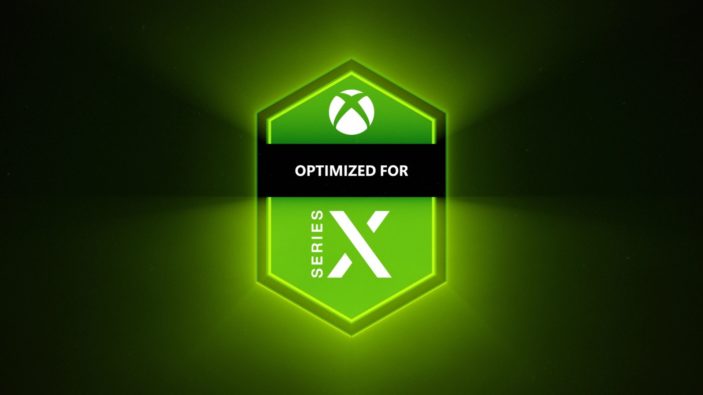
System features
The features of the Xbox Series X that are most keenly felt are the result of its blindingly fast NMVE drive. Quick Resume is a beautiful addition that allows for jumping between games in a flash. I can turn my machine off, unplug it from the wall, and leave it disconnected for a day. I can then plug it back in, power it back on, and not only does it boot to the home screen in a trice, it can also resume the game I was playing at the exact spot I left off. Remarkable stuff. The Series X will also support an external drive via USB, but you’ll obviously be sacrificing load times for extra storage there.
Given that the Series X’s biggest launch title Halo Infinite has been delayed until early in the new year, Smart Delivery has become one of the system’s biggest draws. Launch window titles like Watch Dogs Legion and Assassin’s Creed Valhalla all support Smart Delivery. Purchase either on Xbox One and you’ll automatically be upgraded to the Xbox Series X/S version when you pick your console up. Just download it on the new machine and play.
The new Optimised for Series X badge tells buyers which games will be, well, optimised for Series X. What this basically means is that if a game has the Optimised badge, it is aiming for 4K60 performance, with HDR colour and raytraced lighting if available. Titles that feature this badge of honour already include Gears 5, Forza Horizon 4, Dirt 5, Watch Dogs Legion, Assassin’s Creed Valhalla, Sea of Thieves, Yakuza: Like A Dragon, and Ark: Survival Evolved.
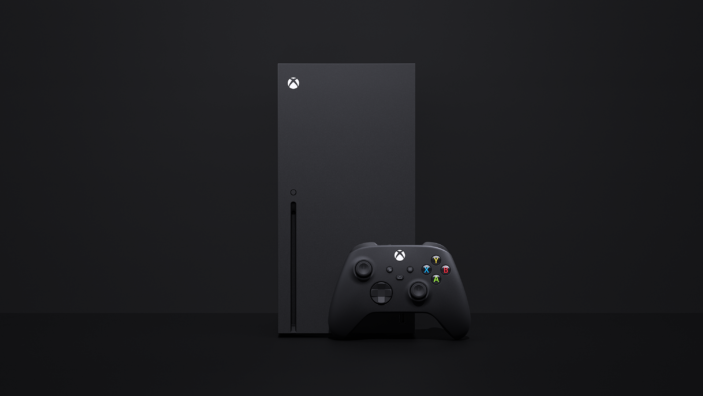
Controller
Externally, the Xbox Series X controller hasn’t been much at all from the last generation. It’s slightly smaller across the midsection, and from top to bottom. While the A, B, X, and Y buttons appear to retain the same spacing, the core cluster of Menu and Select buttons have been shifted closer together. A new Share button completes the cluster. With it, players can share screenshots of video grabs of their games directly to social media or upload them to their OneDrive for safekeeping. The Share button’s inclusion is an indicator of how closely Xbox has been watching its competition. Though the Xbox One featured a slew of content sharing features, Sony’s DualShock 4 made the process as simple as pressing a single button.
The most obvious change is to the D-Pad, which now uses a facetted dish to form its base with the cardinal directions (up, down, left, and right) overlayed on top. This is a move designed to appeal to fighting game enthusiasts, who often bemoaned the Xbox One’s small, cardinal-only D-Pad, ill-suited to the diagonal and sweep-based inputs used in fighters.
I don’t know if they actually have been, but the sticks feel like they’ve been lowered a touch so that my thumbs don’t rest so high on them. The sticks also don’t click as sharply against the chassis as they did on the Xbox One, which I appreciate. It also feels much, much lighter overall helping make it much more comfortable in the hand.
If I have a gripe with any facet of the controller its the dogged insistence on powering it with a pair of AA batteries.
Batteries!
Honestly.
In the year of our lord two thousand and twenty, I am expected to buy a Play & Charge kit like we’re still on the Xbox 360. At a price tag of $89.95 AUD for the same carbon black model in the box, it’s hard not to feel like Xbox could have sprung for an internal battery here. I’m willing to pay as many as twenty extra dollars for a built-in battery if that’s what it takes.
Obviously, I’m being deliberately dramatic, and I hope Xbox will consider this the constructive feedback it’s intended to be. Xbox’s preference has been to make internal batteries a value add for its Elite series controllers but it feels like the time has well and truly come to make them a part of the standard arrangement.
What can I play and how does it run?
As mentioned earlier, the delay of Halo Infinite was a major blow to the Series X’s launch prospects. That said, the lack of a killer app at launch may be a blessing in disguise. Thanks to Xbox Game Pass, and the teetering stack of untouched games most players do their best to ignore, now might be the perfect time to take a chunk out of your Pile Of Shame. Xbox plans on making quite a few of its first party titles from last-gen part of its Optimised for Series X library, and even games that don’t get the nod will still run much more smoothly on the new hardware.
In terms of new exclusives, Xbox Series X owners will have The Falconeer and Bright Memory available on day one. Beyond this, the bulk of what’s available will be picked up by cross-platforms and third parties. Ubisoft’s just released Watch Dogs Legion arrived last week and is already compatible with next-gen. Assassin’s Creed Valhalla, which makes greater use of next-gen architecture, drops day-and-date with the Series X/S on November 10. Last gen titles from third parties like Borderlands 3, Devil May Cry 5, No Man’s Sky, and Fortnite will all be ready to go day-and-date.
What I’ve found from diving back into my own back catalogue is a litany of games that run much more smoothly on next-gen than they did on even the Xbox One X. Ori and the Will o the Wisps benefits greatly from the hardware upgrade, the rough edges of its launch smoothed out a great deal. Gears 5‘s visual updates are beautiful across the board and make it feel like a whole new game. The Gears series has always been the showroom piece for the Unreal Engine’s capabilities but here The Coalition have really made it shine. Sea of Thieves looks absolutely gorgeous in 4K60 HDR, as does Dirt 5.
Forza Horizon 4 was one area where I felt like the upgrades weren’t quite being taken advantage of. What I found was that it was still very much locked into either Graphics Mode (high res textures and lighting locked to 30 frames) or Performance Mode *lower res textures at 60 frames). It felt like the Series X should be able to take Performance Mode on without sacrificing frames, but alas.
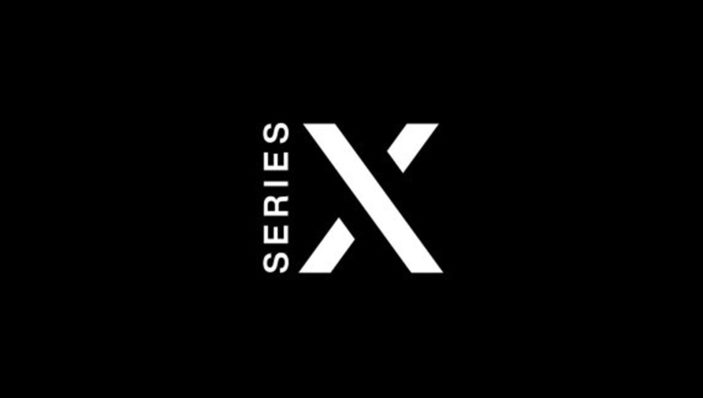
Final thoughts
The Xbox Series X is Phil Spencer’s grand plan come to fruition, and a confident return to form. It has a lot to offer — power, games, accessibility — and demonstrates not merely a willingness to learn from prior missteps, but an eagerness to improve. To be better, for every possible type of player. That is a rare position for a hardware maker to take. This is doubly true of Xbox, which has traditionally been the noisiest, most chest-beatingly American of The Big Three. Time and experience has made it humble and a good listener.
It took a public shaming and a hardware generation cast as a background extra for Microsoft to create a system as strong as the Series X. This might seem harsh, but I think it was worth it. The industry is always better served when there’s real competition among the big dogs. Xbox is back in the game at last and that is good news for all of us.
Review conducted on pre-release Xbox Series X hardware generously provided by Xbox ANZ.
The Xbox Series X launches on November 10, 2020 across Australia and New Zealand with an RRP of $749 AUD. Launch shipments are currently sold out. Post-launch shipments are due to arrive at Australian retailers later in November. Find out more about Xbox Series X here.
